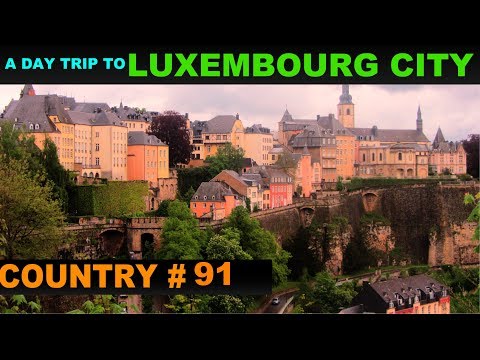
Luxembourg City, the capital of the Grand Duchy of Luxembourg, might be small in size, but it packs a vast array of historical, cultural, and natural attractions. Nestled in the heart of Europe, this multilingual city is not only the seat of several EU institutions but also a place where past meets present in an exciting and dynamic way. Whether you are visiting for a day or planning a longer stay, Luxembourg City offers a picturesque setting with its old fortifications and modern architecture. Here’s your ultimate tourist guide to exploring this captivating city.
### Historical and Cultural Sites
#### 1. The Old Quarter
Luxembourg City’s historic core is a UNESCO World Heritage site. Wander through its cobblestone streets and marvel at the ancient buildings and fortifications that tell tales of the city’s past. Notable landmarks include the Bock Casemates, underground tunnels that were part of the city’s defenses, providing not only intriguing walks but also spectacular views of the Alzette River valley.
#### 2. Grand Ducal Palace
The official residence of the Grand Duke is a beautiful example of Renaissance architecture dating back to the 16th century. It is open to visitors during summer when you can join a guided tour to experience its lavish interiors and learn about Luxembourg’s grand ducal family.
#### 3. Notre-Dame Cathedral
This Gothic cathedral with Renaissance adornments was built between the 16th and 18th centuries. It features impressive stained glass windows, several ornate altars, and the royal family crypt. The cathedral’s blend of architectural styles reflects various periods in Luxembourg history.
#### 4. National Museum of History and Art (MNHA)
Located in the Fish Market area – historically one of Luxembourg City’s most important crossroads – MNHA offers an extensive collection ranging from archaeological objects from the prehistoric times to contemporary art exhibitions.
### Green Spaces
#### 1. Pétrusse Valley
Providing a green escape right in the center of the city, Pétrusse Valley offers delightful walking paths alongside lush scenery and historical ruins. It’s perfect for a relaxing stroll or an invigorating jog.
#### 2. Parc de Merl-Belair
For families visiting Luxembourg City, Parc de Merl-Belair is ideal with its spacious playgrounds, pleasant pond where ducks swim around lazily, and lots of open spaces for picnics or sports.
### Culinary Delights
Luxembourg’s cuisine reflects its cultural diversity with influences from neighboring France, Germany, and Belgium. Be sure to try local specialties such as:
– **Judd mat Gaardebounen** – smoked pork neck with broad beans.
– **Kachkéis** – cooked cheese which can be spread on bread.
– **Quetschentaart** – plum tart that finds favor among locals especially when plums are in season.
Don’t forget to visit Chocolate House Bonn by Nathalie Bonn right across from Grand Ducal Palace for its famous chocolate spoons that melt into hot drinks creating an irresistible beverage!
### Practical Information
– **Getting Around**: The city has an efficient public transportation system including buses and trams which are free since March 2020! This makes it incredibly easy to explore different parts without worrying about tickets.
– **Weather**: The best time to visit is between May and September when temperatures are mild though rain can be expected anytime during the year so always carry an umbrella.
– **Language**: While Luxembourgish is the national language; French, German, and English are widely spoken so communication should not be an issue for English-speaking tourists.
### Conclusion
Luxembourg City might be small but it certainly charms everyone who visits with its blend of culture, history, gastronomy, and green spaces. Whether it’s exploring deep gorges set within urban landscapes or enjoying high-end shopping experiences; every corner has something unique to offer making it a must-visit European destination!
